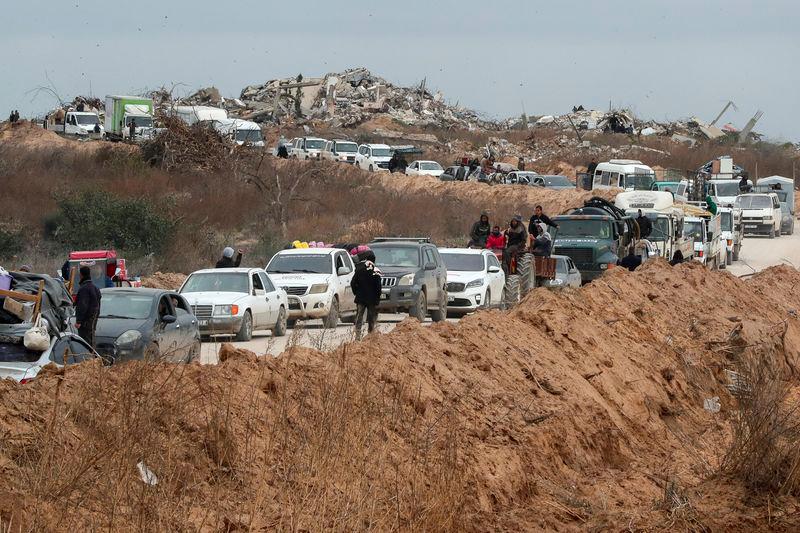CAIRO/JERUSALEM: The Israeli military has withdrawn from an area of Gaza known as the Netzarim corridor that bisects the enclave, Hamas said on Sunday, a move that was expected under the ceasefire agreement between Israel and the Palestinian militant group.
An Israeli security source, requesting anonymity as they were not authorized to speak publicly, confirmed the Israeli military was withdrawing from its positions in central Gaza.
Israeli forces had already reduced their presence there.
Hamas celebrated the withdrawal as a victory and the Hamas-run police force deployed to the area to manage the flow Palestinians crossing through. The Israeli military had no immediate comment.
Reuters footage showed what appeared to be Israeli military vehicles moving away from the coast and towards the Israeli border.
ALSO READ: Egypt to host emergency Arab summit on 27 February to discuss ‘serious’ Palestinian developments
Since the early months of the war Israeli forces had occupied the roughly 4 mile-long (6km) corridor south of Gaza City that stretches from the Israeli border to the Mediterranean Sea.
The corridor cut off Gaza's northern communities, including its largest metropolitan area, from the south.
Thousands of Palestinians have streamed through the corridor in recent weeks, returning to their homes in the north from southern Gaza where they had sought shelter from the war.
Some who crossed over have described their shock after seeing the destruction of communities and discovering what they said were human remains in areas where Israeli forces had withdrawn.
Much of northern Gaza has become a wasteland following Israel's devastating campaign. After finding their homes destroyed, some Gazans have gone back to the south, while others have set up tents where their homes once stood.
ALSO READ: Iran urges emergency meeting of international Muslim group to discuss Trump’s Gaza plan
Former American soldiers employed as private contractors have been deployed to inspect vehicles passing through the corridor in recent weeks following the ceasefire agreement that was implemented on Jan. 19 after more than 15 months of war.
Crowds of people were seen traversing the corridor on Sunday as Hamas announced the Israeli military had withdrawn, while a long line of cars waited to pass through.
Hamas military and police forces have increased their public presence since January's ceasefire, in what analysts say is an intentional message that the group has not been defeated.
Israel vowed to destroy Hamas for its October 2023 attack in which 1,200 people were killed, most of them civilians, and over 250 taken hostage, according to Israeli tallies.
More than 48,000 people have been killed in Israel's retaliatory assault, according to Palestinian health authorities, who say most of the dead are women and children.
CEASEFIRE TALKS
Indirect negotiations between Israel and Hamas on the next stage of the ceasefire agreement that began on Jan. 19 are expected to soon start following Israeli Prime Minister Benjamin Netanyahu's visit to the United States last week.
Washington has backed the negotiations mediated by Qatar and Egypt and the ceasefire deal has largely held since it started.
However, Gazan medics said that four Palestinians, including an elderly woman, had been killed by Israeli gunfire in two separate incidents on Sunday near Khan Yunis and in Gaza City.
The Israeli military said soldiers had fired warning shots at “several suspects” and that “several hits were identified”, when asked about the Gaza City incident where medics said three Palestinians had been killed and five wounded. The military was not aware of the incident where the woman was allegedly killed.
In Qatar, ceasefire talks on the second stage of the phased deal are expected to start as soon as this week. Last week, U.S. President Donald Trump made a surprise call for Palestinians to be displaced from Gaza and for the enclave to come under the ownership of the U.S., which would rebuild it.
U.S. officials have since walked back some of Trump's remarks, saying Palestinians could return to Gaza once it was cleared of unexploded ordnance and rebuilt.
Still, Trump’s plan was widely panned with some critics saying it amounted to “ethnic cleansing”.









